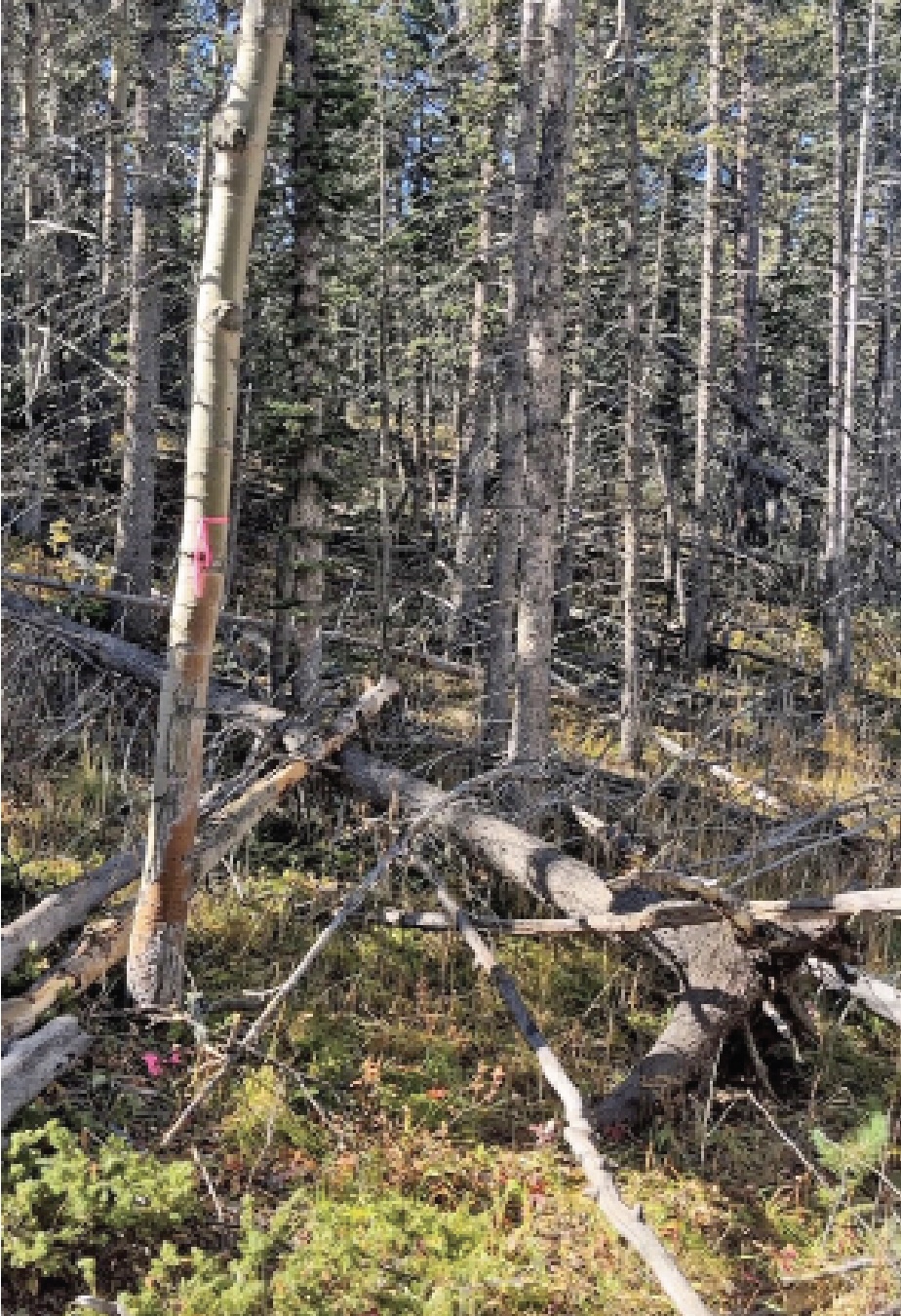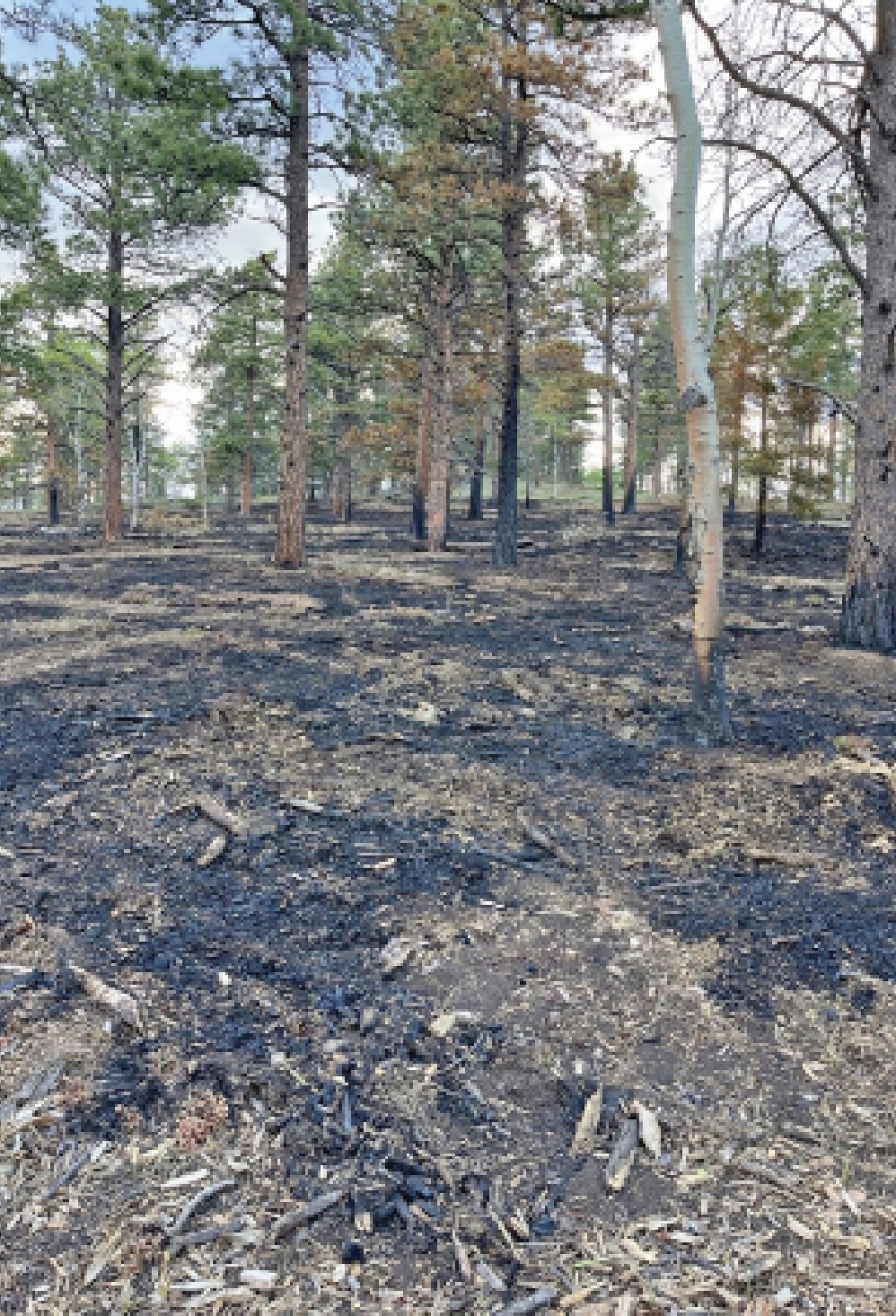At 12:40 p.m. Sunday, June 2, 911 communication centers began receiving calls about smoke coming from Pikes Peak. The smoke was from a lightning-triggered wildland fire near the Manitou Reservoir, in the foothills northwest of Manitou Springs.
According to Manitou Springs Fire Chief John K. Forsett, with high temperatures, low humidity and wind gusts up to 20 mph that day, the fire had the potential to do extensive damage not only to the forest but to the city of Manitou Springs’s primary water source – only 1/8 of a mile north of the fire.
The fire reached 1 acre in size. In a collaboration among the U.S. Forest Service, Manitou Springs Fire Department, Colorado Springs Utilities Catamount Wildland Fire Team and the Monument Helitack crew, the fire was contained by 5 p.m. and fully controlled two hours later.
The success surrounding the Manitou Reservoir fire extended beyond the fire lines held that day.
It began in 2017 when the MSFD began working with the city’s Planning Department to create a fire-adaptive community.
In a statement to the Bulletin, Forsett detailed how the Fire Department evaluated the risks on every parcel in the city, created wildfire educational data and material, and developed the city’s first Community Wildfire Protection Plan, which included providing residents with one-on-one property assessments and fire mitigation recommendations.
Since then, Public Works created additional opportunities for sustainable efforts and fire-adaptive community programs such as neighborhood chipping services and chipper days, as well as planning for and reducing wildfire risks on city properties and parks.
It was amid these efforts that another project was born.
“While developing the Community Wildfire Protection Plan,” said Forsett, “the Fire Department recognized that the city’s water supply was of particular concern as it pertained to wildland fire risks. The city’s water storage and conveyance (watershed) are affected by more than 7,000 acres of forest land, that if interrupted by erosion and post-fire debris flows, would completely cease the city’s ability to provide potable water without costly interventions from other sources.”
In 2021, Manitou Springs City Council approved a matching grant agreement with the Coalition for the Upper South Platte that, over the next two and a half years, would treat 65 acres by reducing the forest density and increasing forest resistance to disturbances, such as fire. These efforts increased tree vigor, understory production, wildlife habitat and made tree stands more resilient to the effects of drought and outbreaks of insects and disease.

The goal was to restore the forest to a more natural trajectory where the diversity of stand density, species, age and size-class trees was maintained across the larger landscape. The project was completed in October 2023.
It was within those 65 acres that an aspen tree was struck by lightning and fell burning to the forest floor, producing the plume of smoke that prompted the public alarm on June 2.
According to USFS Public Information Officer Ralph Bellah, in wildland fires, flames must remain less than four feet high for firefighters on the ground to directly attack it. In large wildfires, flames that begin on the forest floor use ladder fuels such as small trees, shrubs and dead branches to climb up trees, jumping from tree to tree.

Mitigation efforts aim to reduce these excess fuels.
“The fire will stay on the surface and won’t get into the crowns of the trees,” Bellah explained, “so therefore firefighters are able to engage and go direct line with it, rather than backing off to some ridgetop and putting in a fire line there.”
Naturally occurring wildfires often play a role in mitigating larger outbreaks by burning off diseased and excess vegetation that can serve as fuel, said USFS Public Information Officer Dawn Sanchez, whose organization works with local fire departments and jurisdictions on fire suppression and mitigation projects.
“Because we are suppressing fire so heavily,” she explained, “the forests have become overgrown.”
As a result, preventive measures, such as those the city of Manitou Springs performed, are playing increasingly important roles in minimizing the destructiveness of wildfires.
If a catastrophic wildfire destroyed an area like that surrounding the Manitou Reservoir, the resulting damage can make soil hydrophobic to the point where it no longer effectively absorbs water; that’s what happened after the Waldo Canyon Fire above U.S. Highway 24 in 2012. That can lead to contaminated run-off in the drinking water.
Regarding the Manitou Fire and the city’s preventive measures leading up to it, “what we saw in that fire is why we do what we do,” Sanchez said.
As far as future mitigation efforts, Forsett said that the USFS and Colorado Springs Utilities are expected to perform a burn on the north side of Manitou Reservoir fall of 2024 to improve forest sustainability and protect the water storage. Additionally, the city has obtained bids to treat 20 more acres on the reservoir’s north side to reduce high-density understory and thin trees.
Forsett emphasized that fire mitigation and prevention cannot solely rely on government measures. Citizens must recognize that they are the most valuable resource for creating a fire-adaptive community.
“Our residents and business owners must work together as neighbors, neighborhoods, homeowners associations and as a community to initiate and sustain efforts that make a difference,” he said.
“Locally, we’ve seen the Hayman Fire, the Waldo Canyon Fire and the Black Forest Fire destroy hundreds of homes, and while the city can provide many services…it can’t manage the greatest percentage of our community, the private and commercial properties.
“The community … must seek out options to improve their property to make it fire-adaptive and sustainable in the event of a wildfire. Residents and business owners alike must engage with one another and develop plans to reduce fuels and risks within their neighborhoods and ultimately throughout the city.”
In other words, to effectively replicate the efforts of June 2, addressing mitigation within the city will be as essential as managing the forests.
Information: ManitouSpringsCo.gov/firemitigation and tinyurl.com/ManitouResfireJune2024.

